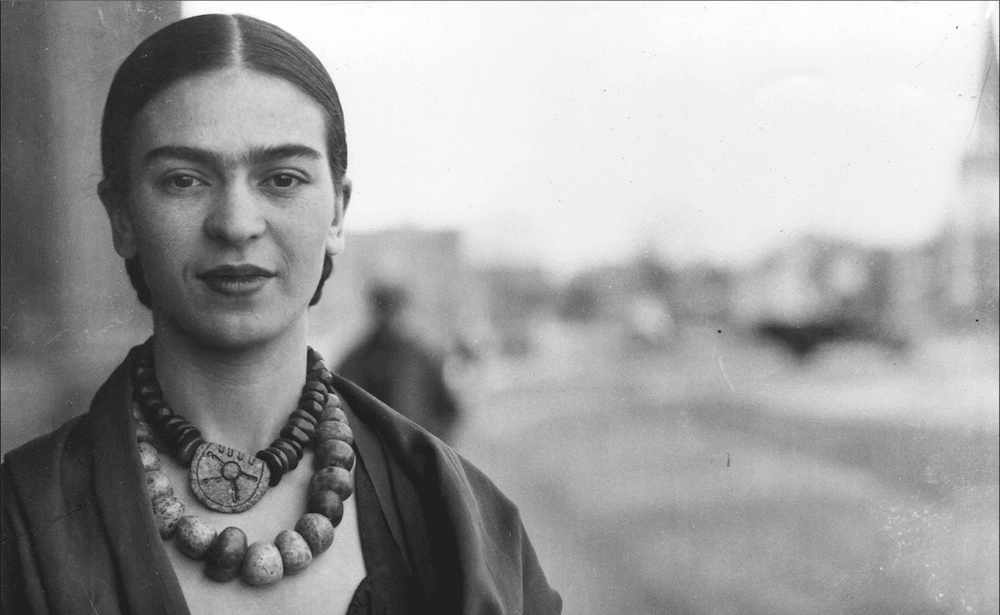Frida Kahlo is an indisputable icon. An artist whose identity and image have surpassed her work positioning her into the higher echelon of cult status. But how well do we know the woman behind her infamous self-portraits? The true magic of Kahlo is her accessibility while at the same time remaining elusive. This dichotomy drove me to join hundreds of others at Sundance to watch the latest documentary FRIDA directed and edited by Carla Gutiérrez winner of the Sundance Jonathan Oppenheim Editing Award.
Partnering subtle, innovative animation with found footage, Gutiérrez creates a film that allows Kahlo to speak for herself. While there is no audio of Kahlo’s actual voice, a voiceover provided by actress Fernanda Echevarría Del Rivero, guides us through her diaries and musings as we explore Kahlo’s life through her own words and creations.
The film walks through her life from her childhood trauma to her tumultuous relationship with misogynist Diego Rivera to her resulting struggles with chronic pain and disability. What sets this documentary apart is its deep dive into Kahlo’s lesser-known aspects, delving into her political activism, her miscarriage, her sexuality, and her identity as a proud Mexican woman. It offers a nuanced portrayal beyond the simplistic narrative often attached to Kahlo, further elevating her complexity and depth.
Gutiérrez’s direction is masterful, weaving together archival footage, vibrant animations, and intimate glimpses into Kahlo’s personal life to create a rich tapestry of her world through her voice in a compilation of her letters and diaries. In a Q&A after the film screening, Gutiérrez said, “I first fell in love with Kahlo’s painting, a long time ago in college, I saw her painting of the borderline between the United States and Mexico… and really, I’ve lived with this story.”

Stressing the importance of having Kahlo speak for herself in the film, the animations act as a similar extension of Kahlo’s voice. The film’s artistic direction and vision offer a visually stunning exploration of her innermost thoughts and emotions only possible through film. The animation is as beautiful as it is controlled, enhancing her paintings without disturbing the original intent behind many of her most famous works. Animators Renata Galindo and Sofía Inés Cázares articulated their intentions for FRIDA, sharing during the Q&A, “The main thing was we wanted to keep Kahlo’s art as authentic as possible and be as respectful as we could of her work, so the main thing was we didn’t want to bring any external elements or any of our creative into this because she’s the artist.”
One of the documentary’s most poignant moments comes from its exploration of Kahlo’s relationship with her own image. Through her iconic self-portraits, Kahlo grapples with themes of identity, pain, and resilience, offering a raw and unfiltered glimpse into her psyche. The film explores moments of Kahlo’s life that have not been explored or talked about much including her miscarriage and her relationship to her body before, during, and after her pregnancy. It also emphasizes in detail her deep exploration and relationship to her body as it continued to fail her and her surrealist approach to depicting herself and it in her art.
Gutiérrez captures this beautifully, allowing Kahlo’s art to speak volumes about her experiences and innermost struggles. “Like so many people, I’ve connected with Kahlo’s art. I got obsessed with her life. I read all the books about her, kept looking at her paintings. And as I matured as a woman, I kept feeling connected over and over again with her art. So I feel like I have been living with this story for over 20 years. When we thought about originally telling her story, we returned to that original material that I had read back [and] realized she can really carry her own narrative and that’s where we started.”
Overall, FRIDA is a captivating and thought-provoking documentary that offers a fresh perspective on one of the most iconic artists of the 20th century. Through Gutiérrez’s expert direction and Kahlo’s own words, we are invited to rediscover the woman behind the legend, gaining a deeper understanding of her art, her struggles, and her enduring legacy. Whether you’re a die-hard Kahlo fan or new to her work, this documentary is a must-watch for anyone interested in the intersection of art, identity, and activism.

